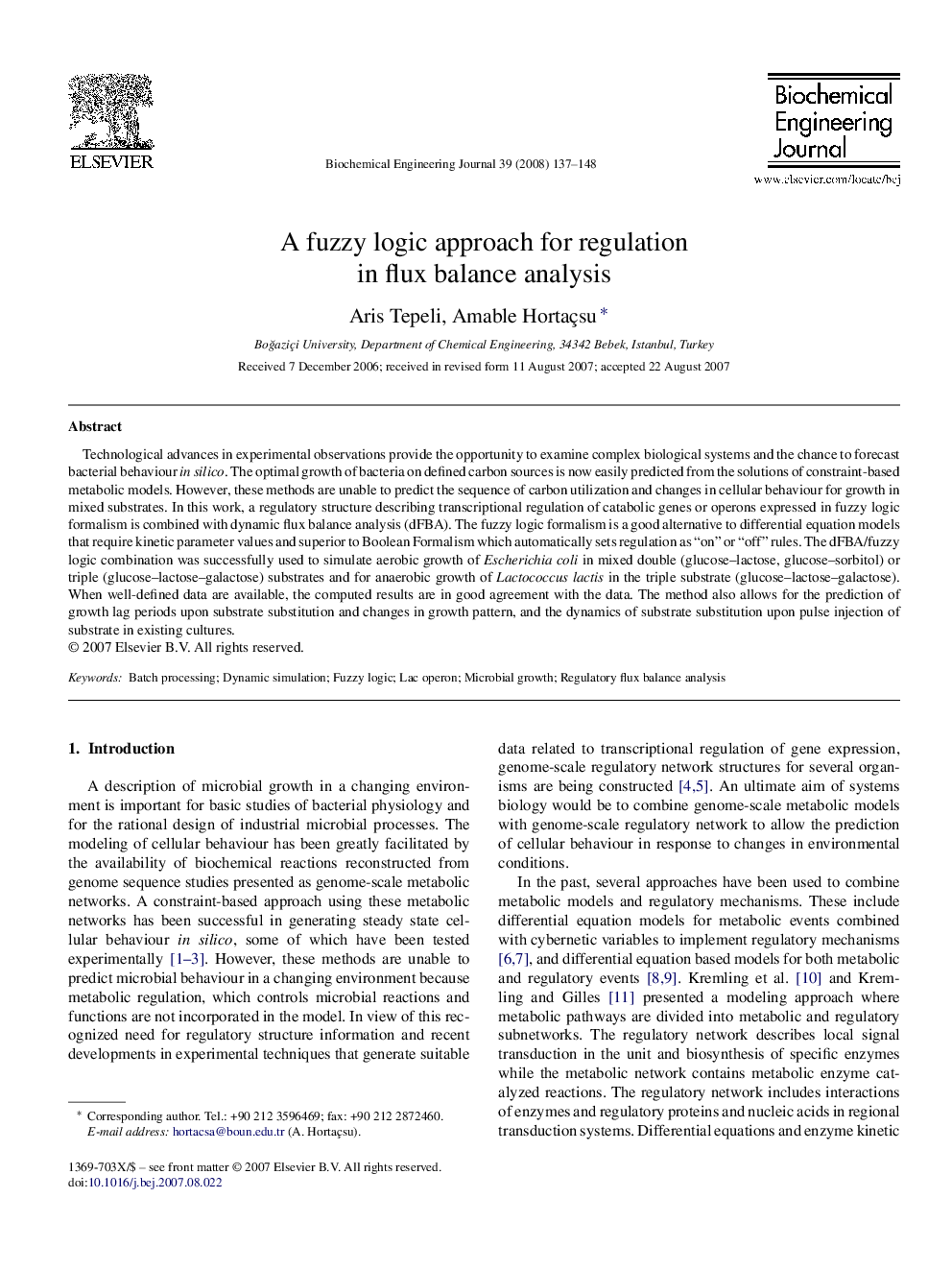| کد مقاله | کد نشریه | سال انتشار | مقاله انگلیسی | نسخه تمام متن |
|---|---|---|---|---|
| 4546 | 231 | 2008 | 12 صفحه PDF | دانلود رایگان |

Technological advances in experimental observations provide the opportunity to examine complex biological systems and the chance to forecast bacterial behaviour in silico. The optimal growth of bacteria on defined carbon sources is now easily predicted from the solutions of constraint-based metabolic models. However, these methods are unable to predict the sequence of carbon utilization and changes in cellular behaviour for growth in mixed substrates. In this work, a regulatory structure describing transcriptional regulation of catabolic genes or operons expressed in fuzzy logic formalism is combined with dynamic flux balance analysis (dFBA). The fuzzy logic formalism is a good alternative to differential equation models that require kinetic parameter values and superior to Boolean Formalism which automatically sets regulation as “on” or “off” rules. The dFBA/fuzzy logic combination was successfully used to simulate aerobic growth of Escherichia coli in mixed double (glucose–lactose, glucose–sorbitol) or triple (glucose–lactose–galactose) substrates and for anaerobic growth of Lactococcus lactis in the triple substrate (glucose–lactose–galactose). When well-defined data are available, the computed results are in good agreement with the data. The method also allows for the prediction of growth lag periods upon substrate substitution and changes in growth pattern, and the dynamics of substrate substitution upon pulse injection of substrate in existing cultures.
Journal: Biochemical Engineering Journal - Volume 39, Issue 1, 1 April 2008, Pages 137–148